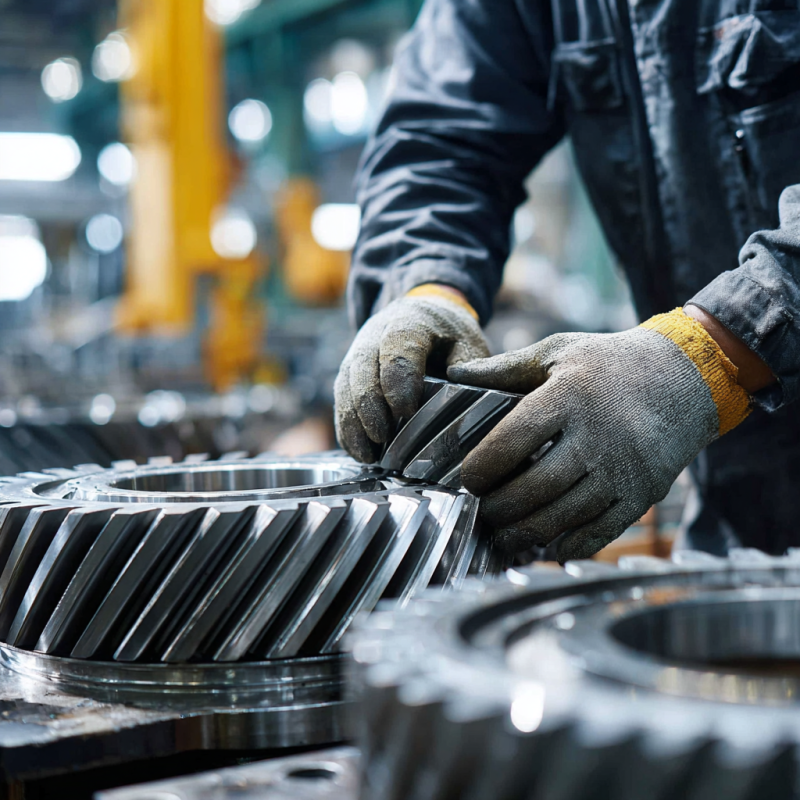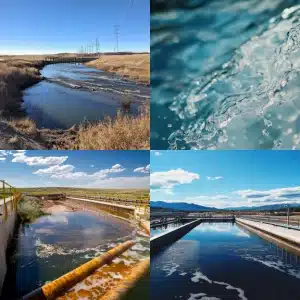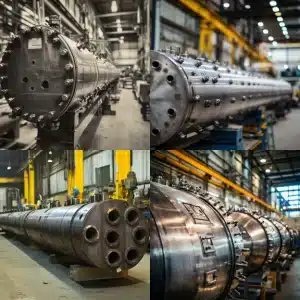
Mechanical failure analysis helps identify root causes of equipment breakdowns like fatigue, corrosion, or design flaws, ensuring safer and more reliable operations. With Red River LLC’s ASME-certified fabrication, prefabrication strategies, and rigorous testing, companies can reduce costly downtime while improving long-term performance.
Understanding Mechanical Failure Analysis in Industry
Nearly every industrial process depends on reliable equipment, especially systems exposed to high pressures or intense operating conditions. A single breakdown can stall production, jeopardize worker safety, and rack up steep repair costs. Good news, this is easier to prevent than you might think. By studying how and why these systems fail, you can spot early warning signs, address potential issues, and keep your operation humming. That’s where mechanical failure analysis proves essential. Below, you’ll learn the basics, see how to avoid common pitfalls, and discover steps you can take to strengthen your equipment reliability. Let’s dive in.
Explore Mechanical Failure Analysis
Mechanical failure analysis is a systematic approach used to identify and understand why machines, structures, or components fail to meet performance standards. When you investigate a failed part, you uncover underlying faults in design, materials, operations, or maintenance. By zeroing in on the precise cause, you then gain the knowledge needed to remedy it and prevent future recurrences.
Many industrial sectors rely on failure analysis, from power generation and chemical refining to automotive manufacturing. If you work with pressure vessels, structural frameworks, or rotating machinery, these investigations help protect your bottom line as well as your team’s safety. The process can be executed in-house for simpler issues, but more complex failures often call for specialized labs or collaborative experts.
At Red River LLC, an ASME-certified pressure vessel manufacturer, every Custom/OEM Pressure Vessel is designed with rigorous testing and oversight so you can reduce the risk of costly breakdowns. Their craftsmanship includes advanced modeling and a strong Quality Control process, meaning each vessel meets strict industry standards. Nevertheless, even top-tier coatings, materials, or welds can degrade over time, and that’s where the mechanical failure analysis process proves invaluable.
If you’re new to the topic, you can learn more in our reference on what is mechanical failure analysis. It breaks down the fundamentals in greater detail.
Recognize Common Failure Scenarios
Before you can fix a problem, it helps to see how it typically surfaces. Many failures leave clues in the form of cracks, corrosion, unexpected noises, or operational inefficiencies. Identifying these signs quickly is the first step in preventing small issues from blossoming into major disasters. That’s where mechanical failure analysis plays a crucial role in pinpointing and addressing underlying issues early.
Fatigue-related Breakdowns
Fatigue is a progressive weakening of a material caused by cyclic loading, repeated stress that may be well under the part’s normal load ceiling. Over time, these repeated micro-strains accumulate, eventually creating tiny cracks that can lead to catastrophic rupture if unnoticed. You may see subtle surface cracks, small deformation, or intermittent performance drops. It’s especially common in rotating shafts, welded joints, and dynamic supports areas where mechanical failure analysis can detect issues early. Applying mechanical failure analysis ensures these fatigue-driven weaknesses are properly identified and resolved before they escalate.
If you suspect a fatigue-driven breakdown, you might benefit from a thorough fatigue failure analysis to see if cyclical stresses are pushing your components too close to their endurance limits. Remember, focusing on design modifications, such as smoother transitions or better weld profiles, often extends an asset’s life significantly.
Corrosion-based Damage
Corrosion is a chemical or electrochemical reaction that degrades materials, especially metals, when they’re exposed to corrosive environments such as water, chemicals, or salt. Once rust or pitting starts, it can compromise structural integrity. For pressure vessels, corrosion can lead to thinning walls, leaks, or significant hazard if not addressed, making mechanical failure analysis essential to uncover root causes and prevent recurrence.
Since many oil-and-gas, chemical, and power-generation sites involve corrosive substances, you’ll see how crucial it can be to conduct a corrosion failure analysis. This type of study tells you where the corrosion started, how quickly it’s advancing, and what protective strategies to apply, like coatings or material upgrades.
Material or Design Flaws
Sometimes the underlying cause is as simple as a flawed batch of raw material or a design oversight. Even small differences in alloy composition can lower strength at specific temperatures. Or a poorly placed weld seam might concentrate stress, triggering cracks to form. These design and material flaws lie dormant, often unnoticed until a sudden break highlighting the need for mechanical failure analysis to identify and mitigate such risks.
In these cases, a metallurgical failure analysis pinpoints how the composition of a material or the heat treatment used contributed to the failure. By looking under the microscope, you see any abnormal grain structure, inclusions, or contaminants that reduce durability. Likewise, you can apply a structural failure analysis approach if your framework or vessel layout reveals flaws that undercut load-bearing capacity.
Implement Best Prevention Methods
Reducing failures usually calls for a two-pronged approach: detect weaknesses early and prevent them from recurring. By incorporating mechanical failure analysis into a structured plan, you save time, money, and worry. Applying mechanical failure analysis consistently ensures your equipment stays safer for longer.
Collaborate with an Expert Manufacturer
A critical foundation for reliability is sound design and expert fabrication. Companies like Red River LLC, for instance, are ASME certified with U4 and R stamps, meaning they stamp each vessel only after it has passed rigorous checks. By integrating mechanical failure analysis into their processes, they strengthen quality assurance at every stage. In-house training, a skilled workforce, and a strong culture of accountability further ensure that mechanical failure analysis supports fewer hidden flaws or substandard welds.
Moreover, Red River LLC invests in continuous improvement principles like Lean Six Sigma to analyze feedback from real-world performance data. By doing so, they shape each design to minimize known failure modes. Whether you’re commissioning new Custom/OEM Pressure Vessels or retrofitting older systems, partnering with a manufacturer that stands by thorough mechanical assessments sets the stage for success.
Focus on Prefabrication for Better Quality
Another strategy is taking advantage of prefabrication. Instead of building on-site where variables like weather, layout constraints, and unplanned events complicate matters, you can choose to fabricate modules in a controlled factory setting. By aligning mechanical failure analysis with prefabrication, you reduce risks tied to unpredictable conditions. Prefabrication often reduces errors, shortens overall project timelines, and lowers exposure to risks, while mechanical failure analysis ensures quality and reliability remain consistent throughout.
At Red River LLC, prefabrication is a central theme. They’ve shifted from manual measurements to sophisticated modeling and advanced software, producing accurate isometrics and shop drawings. This not only speeds up the construction of modular solutions but also reduces on-site changes, which translates into fewer mechanical issues down the road. By embedding mechanical failure analysis into prefabrication workflows, Red River LLC enhances accuracy and reliability. Plus, fewer hours in the field means fewer hazards for personnel. According to the Red River LLC, the company’s approach ensures quality is retained while mechanical failure analysis further trims project risks and supports smoother commissioning.
Adopt Vigilant Inspection Routines
Routine inspections catch potential weaknesses before they escalate. You might aim for a rotating schedule of non-destructive examinations (NDE) like radiography or ultrasonic testing. These methods illuminate internal flaws, letting you address them early. Companies that implement consistent checks often report a significant drop in unplanned downtime. When you rely on mechanical failure analysis to dissect each discovered anomaly, you add layers of security to your operations.
New technologies, like acoustic emission sensors or remote monitoring solutions, provide real-time insights as well. If they detect unusual signals, you can arrange a closer inspection. Pairing these technologies with robust mechanical analysis means you’re never left guessing about the true root cause of any emerging malfunction.
Use Mechanical Failure Analysis in Practice
Between advanced modeling, on-the-ground inspections, and third-party partnerships, mechanical failure analysis thrives on teamwork. By staying organized, you can interpret each finding in context and take corrective steps that go beyond surface-level fixes. Here’s a basic look at how to put it all into practice.
Gather Data From Your Processes
Data is your early-warning system. Monitor factors like operating pressures, temperatures, vibrations, and flow rates, then document performance spikes or dips. For instance, you might notice that a heat exchanger is running warmer than usual, which can accelerate stress or corrosion. Integrating mechanical failure analysis with data collection helps identify these warning signs before they become critical. The best approach is to collect data through sensors or logs, and then store it in a centralized location where mechanical failure analysis can be applied effectively.
When you see anomalies emerge, mechanical failure analysis tells you if the root cause is mechanical stress, environmental factors, or subpar materials. If your equipment is operating in harsh conditions, such as highly acidic fluids or abrasive solids, frequent sampling can reveal how close you are to a critical threshold. The more data points you have, the easier it is to spot abnormal trends.
Apply Thorough Inspection Measures
Once you gather relevant data, investigate thoroughly. Mechanical failure analysis typically moves step by step:
- Visual inspection: Check for cracks, corrosion, or unusual wear.
- Material testing: Analyze metal composition and hardness to see if it meets specification.
- Fractography: Examine fractured surfaces under a microscope to identify patterns (e.g., fatigue striations or ductile tearing).
- Documentation review: Assess if design parameters match real-world conditions, overloads or process changes can create hazards.
Keep the process objective by assigning clear roles and responsibilities. For simple cracks, you might run a quick dye penetrant test in-house. For more complicated breakage, an external lab may perform scanning electron microscopy (SEM) or energy-dispersive X-ray spectroscopy (EDS) to unlock advanced insights. In both cases, mechanical failure analysis provides the framework for interpreting results. Once you have the lab findings, you can compare them with known benchmarks or manufacturer specifications, ensuring mechanical failure analysis guides accurate conclusions.
And if you suspect an issue specific to high-pressure systems, you could consult our guide on how to perform pressure vessel failure analysis. By properly identifying the culprit behind a malfunction, you’ll spend far less time and money on guesswork.
Mechanical Failure Analysis
Avoiding costly mistakes in your facility often boils down to understanding why equipment might falter in the first place. Mechanical failure analysis provides that clarity. Whether you spot trouble through real-time sensors, routine inspections, or sudden breakages, each incident is an opportunity to learn and adapt. With the right approach, tempered by data, strong design, and expert collaboration, you can reinforce your systems, trim downtime, and save significant costs over the lifetime of your operation.
Red River LLC’s deep experience in prefabricated modules, Custom/OEM Pressure Vessels, and strict Quality Control protocols is just one example of how the right team can help you integrate mechanical failure analysis seamlessly into your operations. By embracing these insights, you’ll have far fewer equipment surprises, safer working conditions, and a stronger reputation for reliability in your field.
Take Action with Mechanical Failure Analysis
Ready to prevent costly breakdowns and protect your operations? Contact Red River LLC today or request a quote to see how mechanical failure analysis can improve your reliability and safety.
Frequently Asked Questions
1. What is mechanical failure analysis?
Mechanical failure analysis is the process of identifying the root cause of equipment or component failure.
2. How to perform mechanical failure analysis?
To perform mechanical failure analysis, experts examine failed parts, study operating conditions, and use testing methods to determine the cause.
3. Why is mechanical failure analysis important?
Mechanical failure analysis is important because it prevents future breakdowns, improves safety, and reduces costly downtime.
4. Why are pressure vessels so prone to mechanical failures?
Pressure vessels endure high internal forces and often interact with harsh chemicals or extreme temperatures. Even small design oversights or material defects can be magnified under pressure. A dedicated pressure vessel failure analysis can help you pinpoint problems, from stress corrosion cracking to compromised welds.
5. How often should I schedule failure analyses?
You won’t always conduct a full failure analysis on a set interval, but regular inspections can trigger one if you detect anomalies. Many facilities follow an annual, semiannual, or quarterly schedule for thorough checks, escalating to a formal analysis when the inspection data flags concerns.
6. Can prefabrication reduce my risk of mechanical failures?
Yes. Prefabrication in a controlled environment lowers the chance of errors from weather, rushed work, or poor lighting conditions. It also supports better weld quality and consistent testing before final assembly. This approach has shown to cut costs and improve final product reliability.
7. Where can I learn more about other types of failure analysis?
Providing you’re interested in specific areas, you might look at metallurgical failure analysis or corrosion failure analysis. These resources walk you through different failure mechanisms, indicating when it’s best to apply them.
Key Takeaways
- Early detection saves time and money. Monitor vibrations, pressure, fluid chemistry, and temperatures so you can catch issues before they escalate.
- Common failure mechanisms include fatigue, corrosion, and design flaws. Each of these demands targeted solutions to avert costly breakdowns.
- Prefabrication helps reduce mechanical failures. By building in a controlled environment, you minimize human error and get consistent quality.
- Partner with trusted experts. Collaborating with an ASME-certified fabricator like Red River LLC ensures thorough testing and a culture focused on improvement.
- Keep learning. Every breakdown is a chance to gather valuable data, refine designs, and strengthen your operation for the future.




